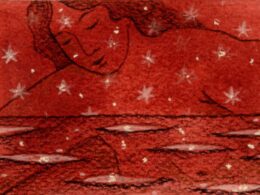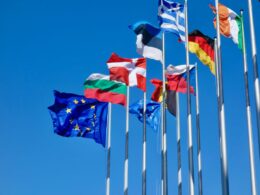As Easter approaches, the shops are bursting with tempting chocolate eggs in colourful wrappings from every-day popular purple to the bling-rich boxes of the more bespoke brands.
But not all eggs melt-in-the-mouth – according to folklore, there was once a legendary goose that laid golden eggs although sadly she perished when a greedy farmer cut her open to try and get all the eggs inside her at once. And more recently, back in 1983, Cadbury’s hid 12 golden eggs across the UK as part of a ‘conundrum’ treasure hunt in which the eggs could be found by cracking the clues in an accompanying book.
There was, however, a secret 13th egg larger than the rest decorated with a star-studded sky and the landscapes and riddles of the hiding places of the other eggs. It was auctioned in the summer of 2017, it sold for over €20,000 – but this is a mere snip compared to the most valuable eggs in the world: Fabergé eggs.
Fabergé is an iconic brand known worldwide to represent luxury and wealth and they’re the ultimate in delicate craftsmanship but what do you really know about Fabergé eggs? Just ahead of Easter, we take a peek inside the story of some of the most incredible Easter eggs ever made.
A Fabergé egg is one of a limited number of jewelled eggs created by Peter Carl Fabergé and his company in a 32-year period between 1885 and 1917, from the year in which he was first asked to create a magnificent Easter egg for the Russian royal family of Russia until Russian revolution, when the tradition stopped: the Tsar was forced to abdicate by the Bolsheviks who, led by Lenin seized control of the government in October 1917, suppressed other political parties and a communist ideology underpinned the politics of Russia from then on, a philosophy with which the opulent traditions of the past were very much at odds.
The Fabergé eggs, however, remain legendary. Each was created by a whole team of silversmiths and jewellers who worked together to make at first one egg per year for Tsar Alexander III and then two each year for Nicholas II. Although most were made for the Russian Royal family some other wealthy people also commissioned a handful.
The very first egg was like a mini set of Russian Dolls – inside an enamelled gold egg, the Hen Egg, a ‘yolk’ of real gold opened to reveal a miniature hen that itself opened to show the tiniest diamond crown decorated with a ruby egg. And over the years, the eggs became increasingly ornate and wondrous, with a delicacy and extravagance beyond the wildest dreams of all but the super-rich.
One egg for example, when opened included a tiny Trans-Siberian Express train, was made of gold, silver, onyx and quartz and its inside was lined with velvet. Another housed, in its velvet interior, a tiny replica of the golden coronation coach used by the eighteenth century Empress of Russia, Catherine the Great.

All were designed and created in the utmost greatest secrecy, each remarkable different, each shockingly opulent, and all with an ingenious surprise inside. Today there are 57 in treasured collections around the world and three of these belong to the British Royal Family, having been acquired by Queen Mary, grandmother to the late Queen Elizabeth II: these are the Colonnade Egg Clock; the Mosaic made of intricate bits of gold, platinum, pink and clear diamonds, rubies, emeralds, sapphires, and moonstone, and the Basket of Flowers Egg.
There may be more eggs, hidden or lost: ten years ago a previously unknown egg, originally created for the Rothschild banking family was found. It is a soft pink hue with a clock set into the front and from the top of the egg a colourful diamond-encrusted automaton cockerel emerges on the hour. It was auctioned for well over €10 million.
Then in 2014 by chance, a scrap metal dealer found a golden egg at an American bric-a-brac market and planned to melt it down for the gold. It was only later, seeing something on the internet, that he realised he might have found the long lost Imperial Faberge egg which was seized from the Tsarina during the Russian Revolution, and was worth around £20 million.
For an extraordinary Easter gift, that’ll set you back nearly €15,000, this spring Fabergé are offering a Heritage Yellow Gold Diamond & Turquoise Guilloché Enamel Hen Surprise Locket a 50cm long 18 karat yellow gold chain. It features turquoise guilloché enamel and round white diamonds, set in 18 karat yellow gold. The locket opens to reveal an 18 karat yellow gold hen, inspired by the Imperial Hen Egg of 1885. Is anybody tempted?










